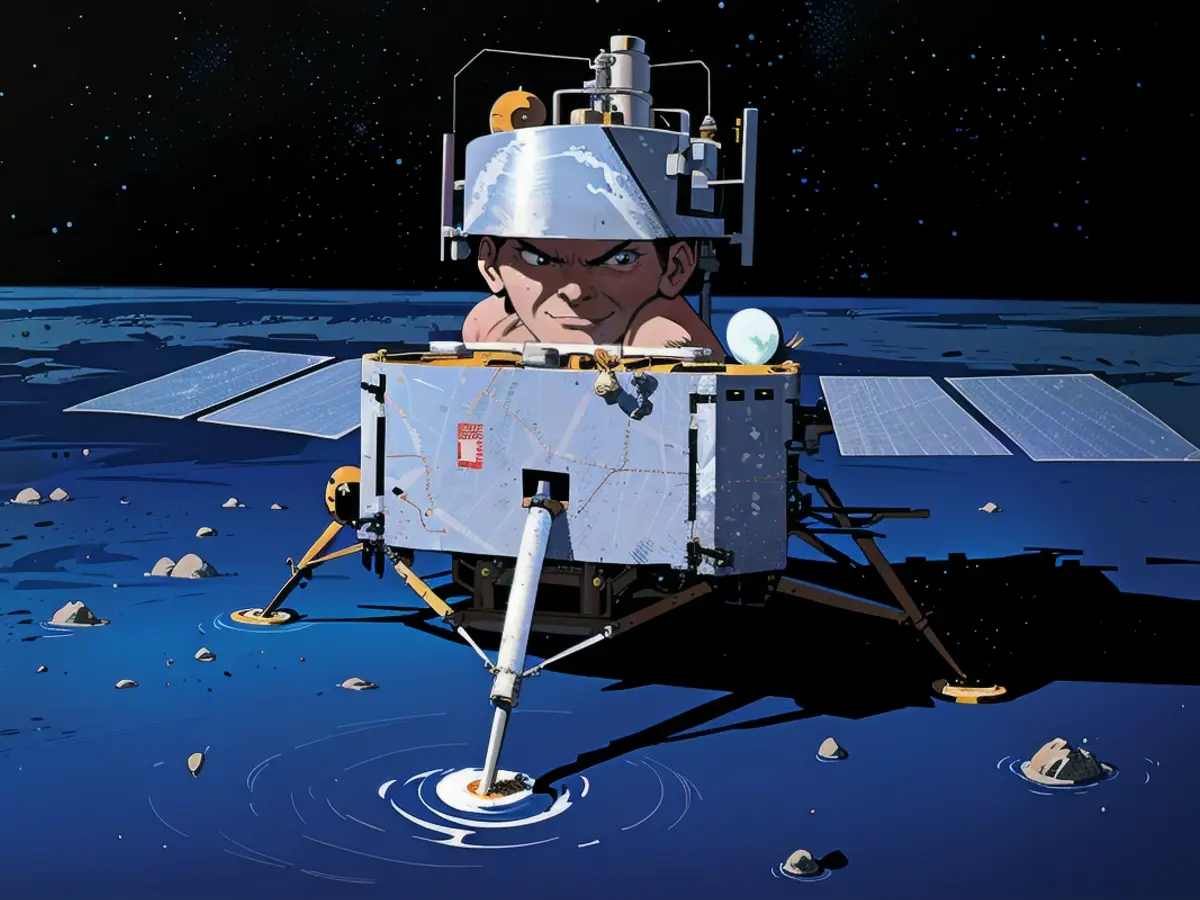Space journeys - China's "Chang'e" spacecraft collects lunar samples and departs from the moon.
China accomplished a significant milestone by becoming the first nation to retrieve and ferry rock samples from the farthest side of the moon with its spacecraft, the "Chang'e-6." The ascension module carrying the collected samples detached from the lunar surface and achieved the targeted lunar orbit, as per the Chinese National Space Administration (CNSA). The samples were collected from beneath the moon's surface using a drill and gathered on the lunar surface.
European Space Agency (ESA) and French tools on board functioned smoothly, according to CNSA. The probe also displayed a Chinese flag.
Hurdles in communication
The CNSA revealed that the mission successfully endured the heated temperatures on the far side of the moon. However, communication between Earth and the lunar module was a challenge since the capsule was on the penumbral lunar hemisphere, where the sun is not visible. Therefore, the control station on Earth relied on the Queqiao-2 relay satellite. The spacecraft had to align itself for the lift-off autonomously.
Currently, the capsule is slated to link with the orbiter and return module in lunar orbit and embark on its trip back to Earth, as per CNSA. Landing is expected to occur in China's Inner Mongolia province, marking the first time in history that samples from the farthest, concealed lunar face have reached the Earth.
Scientists have had keen interest in this location for ages, as samples gathered here could potentially offer indispensable insight into the moon's creation, the planet Earth's creation, and the early solar system's story.
"Chang'e-6" launched from the Wenchang Space Launch Center on the Chinese island of Hainan in early May. It journeyed for over four days to reach the moon's orbit and explored various locations to find a suitable time and spot for landing.
The spacecraft recently reached the biggest and oldest impact crater on the moon, the South Pole-Aitken Basin. This region has intrigued researchers for years since samples from here could shed critical light on the moon's formation, the Earth's genesis, and the inception of the solar system.
Lunar landing missions are extraordinarily complex, as evidenced by unsuccessful attempts by India, Israel, Japan, and Russia in recent times. The moon has caught the attention of several countries, as they believe it harbors valuable resources there.
China has massively invested in its comprehensive space program for years, aiming to match the United States in this field. By 2030, China aims to dispatch a human mission to the moon.
Read also:
- The retrieved moon rock samples from the "Chang'e-6" mission will be analyzed by scientists in France, contributing significantly to our understanding of the moon's creation and the early solar system.
- Despite the challenges in communication, the European Space Agency (ESA) tools aboard the "Chang'e-6" spacecraft functioned flawlessly during the mission.
- Using the drill aboard the "Chang'e-6" spacecraft, China successfully collected rock samples from beneath the moon's surface,adding to China's impressive contribution to rock samples from space travel.
- The rock sample collected by China's "Chang'e-6" spacecraft is a testament to China's growing significance in the field of space exploration, following in the footsteps of superpowers like the United States.
- The "Rock sample" gathered by the "Chang'e-6" mission during its sojourn in the South Pole-Aitken Basin will undoubtedly offer new insights into the formation of the moon and the solar system, fueling scientific breakthroughs.
- The "Chang'e-6" spacecraft's groundbreaking success in collecting rock samples from the hidden lunar face has ignited renewed enthusiasm for space probes and moon landing missions globally, with countries like France investing heavily in the space industry.






